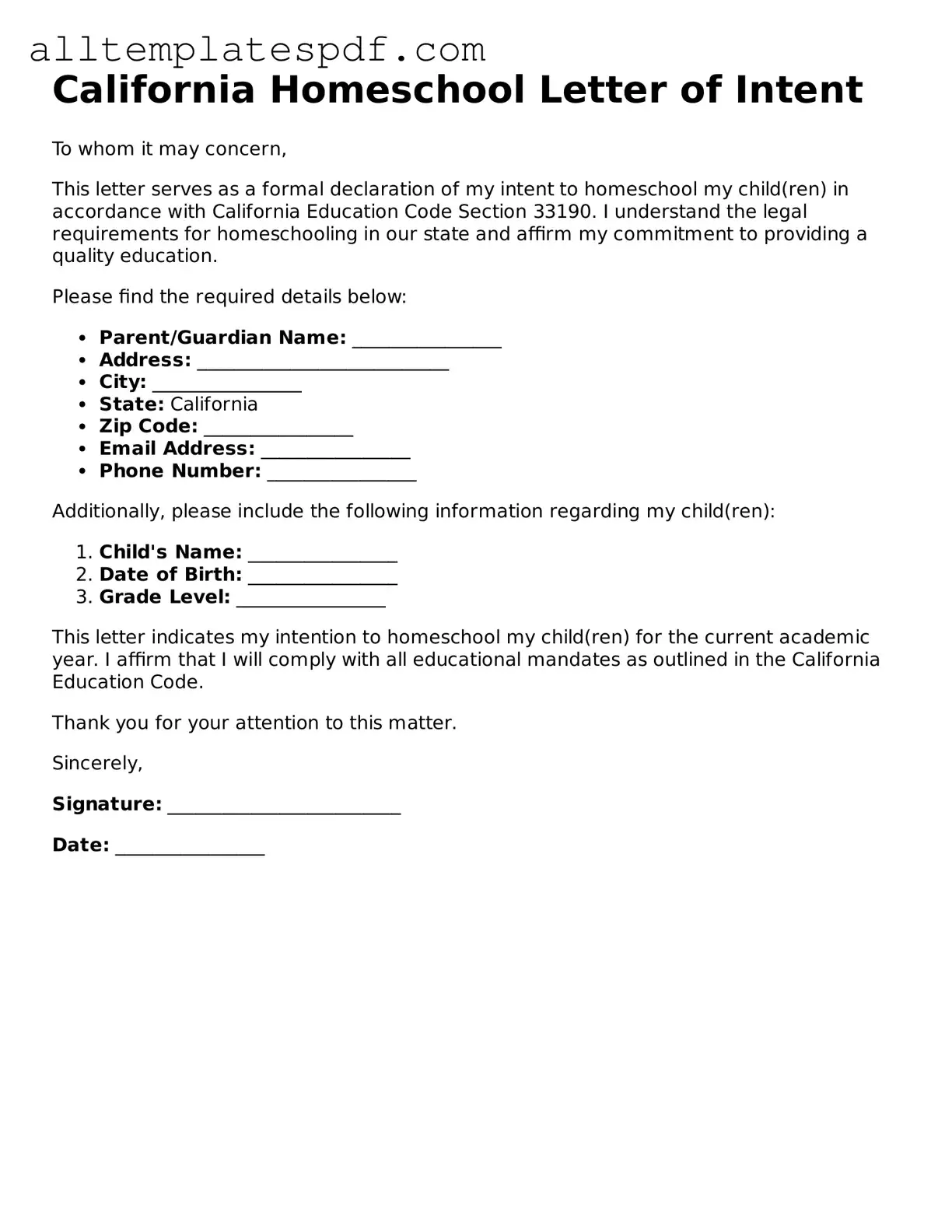Blank Homeschool Letter of Intent Template for the State of California
The California Homeschool Letter of Intent is a formal document that parents or guardians must submit to notify the state of their decision to homeschool their children. This form is essential for compliance with California's homeschooling laws, ensuring that families follow the required legal framework. Completing this form is the first step in establishing a homeschooling program, and it is important to ensure it is filled out accurately.
To get started, fill out the form by clicking the button below.
Open Editor
